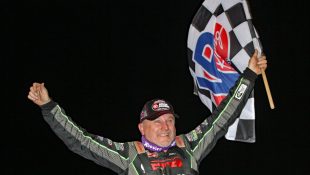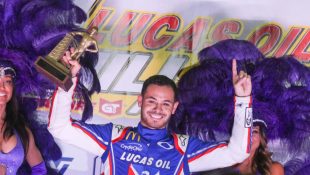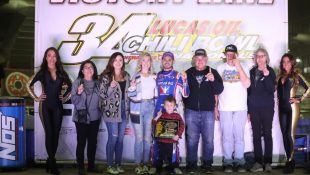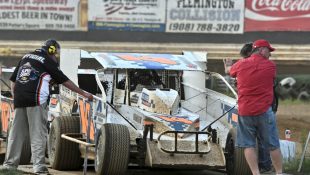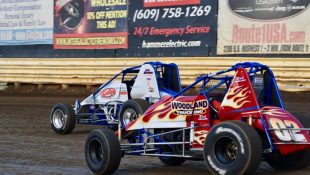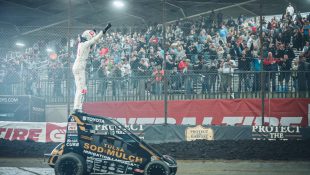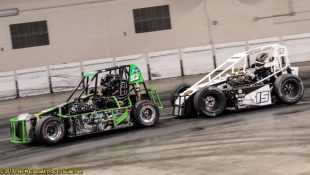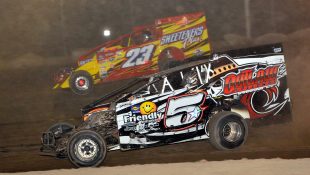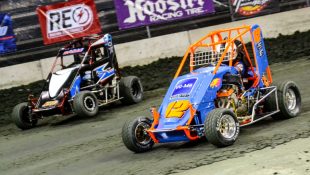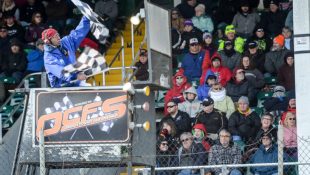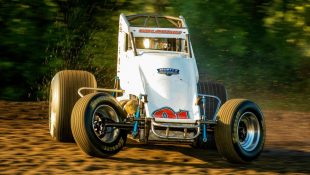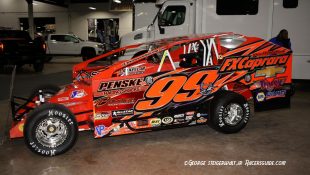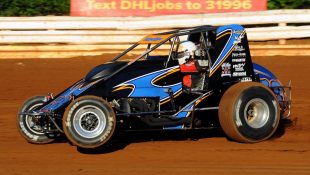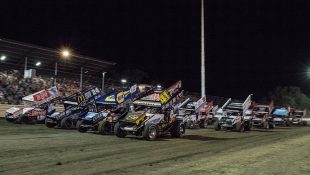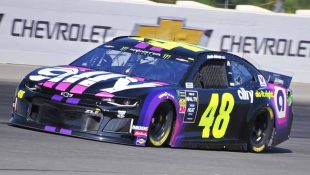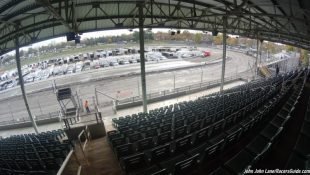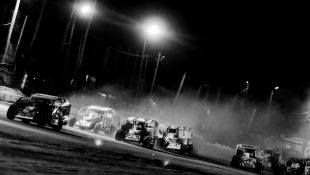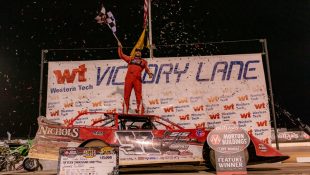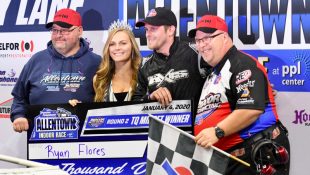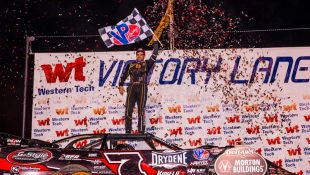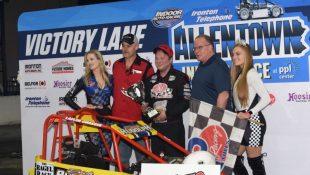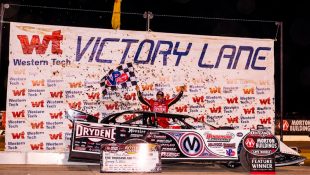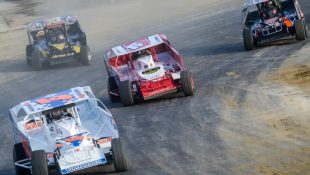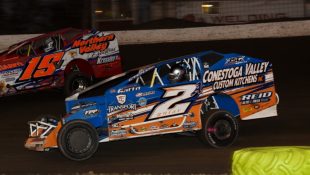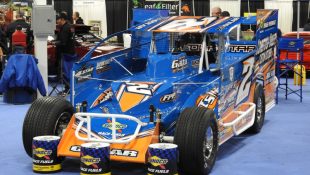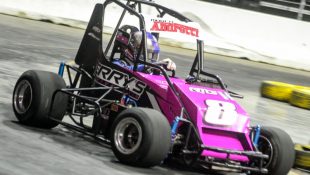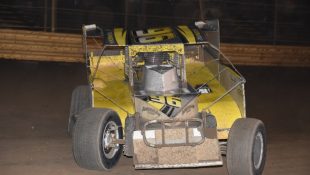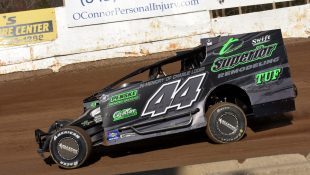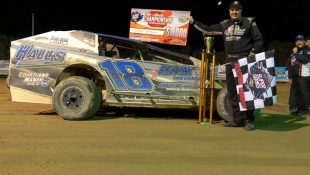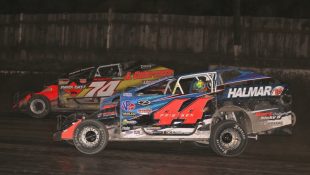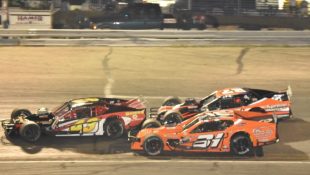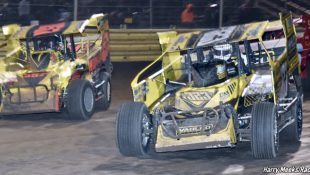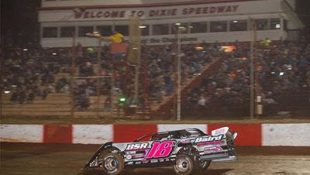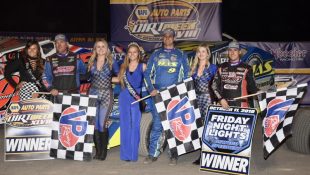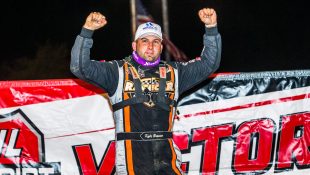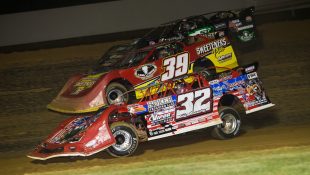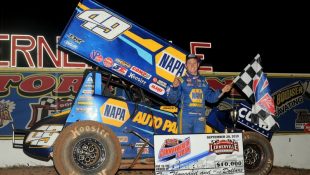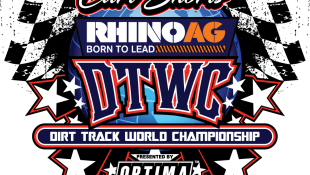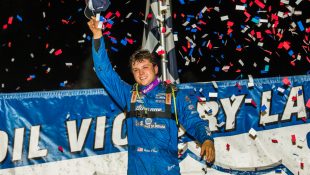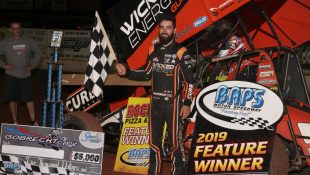THE STARS OF CHIP GANASSI RACING
SCOTT DIXON
TONY KANAAN
CHARLIE KIMBALL
THE MODERATOR: We are joined by ‘The Veterans,’ Scott Dixon and Tony Kanaan. We have the stars of Ganassi Racing. We also have Charlie Kimball joining us.
Tony and Scott, been busy already this year.
SCOTT DIXON: Yes. Obviously excited to be talking about IndyCar and kicking it off and getting ready for the season. Testing for us, we’ve had a few weeks off, looking forward to the new aero kits, Chevy showing a little bit of theirs today. Hopefully we get to see Honda’s sometime soon.
Yeah, obviously starting off the year in a winning way, which is always exciting. The combination, how we won the race this year at the Daytona 24 Hour was exciting for the team and a lot of fun. Hopefully a sign of things to come, some momentum we can carry from the first part of the IndyCar season.
THE MODERATOR: Great to put that kind of victory along with Indianapolis.
TONY KANAAN: Sure. I remember watching some of my competitors racing the 24, Charlie in the day, Scott. I was always anxious about doing it. Finally last year I got a chance to do it with Chip. We obviously struggled a little bit. Sure enough, the year I come, all of a sudden they struggle (laughter).
This year we had a great time. I think it was a great team effort. I got the watch.
THE MODERATOR: Charlie, I always make this comment. We announced your opportunity to come to Indianapolis on a day much like today, cold. You have won in the series, a veteran driver at Indianapolis. Talk about your opportunities racing with this squad.
CHARLIE KIMBALL: It’s always great to be on a team like Chip Ganassi Racing, have great partners. It’s always a great opportunity to come in and learn. You know you have the tools to be able to succeed. There’s pressure, because you know you have to go out and win racing. Having won in 2013, last year not having won a race, something that’s high on our priority list for this year.
It’s always fun driving into the Indianapolis Motor Speedway, even when it’s covered with snow, it’s only 10 degrees outside. It’s great to be at the racetrack talking about IndyCar. A lot of fun to spend time with these guys, all of the Chip Ganassi Racing drivers at the Rolex 24, having both cars running on the lead lap until a mechanical failure on the lead lap.
At the Christmas party, a couple of the drivers talked about wanting a watch. Tony said, You can keep the watch, I want a ring in May.
TONY KANAAN: I get a ring in May, I’ll give you the watch (laughter).
THE MODERATOR: We’ll open it up for questions.
Q. Tony, when you were testing the aero kit, what were some of the biggest differences you noticed?
TONY KANAAN: It looks quite a bit different, that’s for sure. It’s hard for us to tell because we went to Phoenix. The last time I was there was a different track layout. They did actually change the track. We went much quicker this time.
But it felt good. Obviously, like I said, it’s hard to give a comparison because it was on a track that I hadn’t driven the new DW12 currently. But it felt good.
We had a pretty good day there. We did maybe like 500 miles in one day. It was very reliable and it felt good.
Q. Each of you is a teammate. What is it like when you’re on the pavement out there racing and only one of you is going to win? How do you look at each other during the race?
SCOTT DIXON: We obviously work very hard as a team. At Chip Ganassi Racing, it’s open book, and we try to push the envelope to advance all the cars.
Some days you have to understand maybe it’s not your day. But when it comes down to the wire, you’re going to fight your teammates as hard as anybody else. The last thing we get told is to make sure you don’t crash each other out of the race by Chip. That’s something we focus on. In the past we’ve done a pretty good job of that and hopefully that continues.
Yeah, you’re out there to win. We’re all very competitive. We’re going to do whatever it takes to try to get there, but maybe give our teammates a little bit more room.
TONY KANAAN: I think the way to look at it, if I can’t win, I’d rather have one of my teammates win because it’s a whole organization. We call it one team. Obviously I’m not going to say if I don’t win I’m going to be satisfied. If there is a good way of losing, it’s actually having your teammate win the race for the team.
CHARLIE KIMBALL: To follow on Tony’s comments, that one-team mentality has permeated through the team, the IndyCar team. To have all the IndyCars under one roof, really working well together as a group and organization translates well. When you finish 1-2-3, 1-2-3-4, I don’t think the boss cares who wins the race as long as one of his cars wins and one of his cars wins second.
I don’t think I’ve seen a bigger smile when Scott, Dario and I finished 1-2-3 on the podium at Pocono a couple years ago, so we’d like to replicate that again coming up.
Q. Is the new aero package harder to drive? Things that are hard about it?
SCOTT DIXON: It’s been split up between the teams. Phoenix test is all we could go off. The loads were higher, speeds faster. It’s a track we never ran at before. The track has gone through a change, different corner radius, banking, all that kind of stuff. Kind of hard for a reference.
I think we understand the car is going to be more efficient on both sides of the fence with both manufacturers. Physically the cars are going to become more demanding.
It’s kind of all we know at this point until we get to tracks and see comparative times, the loads in competitive environments rather than just fact checking.
Q. Tony, how did you feel after they canceled the Brazil race?
TONY KANAAN: Awesome. Couldn’t come at a better time.
It’s disappointing. I mean, I’ve lived there my entire life and I knew it was a possibility. My biggest concern was how this was going to affect the series. I guess Mark Miles and his team did a great job protecting that, which at least on that matter I think he explained here couple minutes ago.
It’s a big disappointment. I think everybody got caught by surprise. I worry about the fans that got disappointed. I worry about the TV station. They got a lot of stake in the race, got caught by surprise as well. We sold a bunch of tickets. A lot of sponsorship went away with it as well on my end.
So disappointing. Nothing I can do about it. Nothing the series can do about it. Nothing even the TV, that was the promoter, could do about it. It was a lot higher than that.
I don’t know. It’s hard to swallow, hard to understand, and extremely disappointing. I don’t know. I don’t know what else to say. A big disappointment in my country of what they’ve done for us.
THE MODERATOR: Gentlemen, thank you.
An interview with:
MARK MILES
DERRICK WALKER
THE MODERATOR: We begin a new season of competition. Mark Miles is CEO of Hulman & Company. Derrick Walker who has seen this sport from so many different vantage points. Always exciting to begin a new year. We thought we’d throw it right open to questions that you have for these two gentlemen.
Q. Talk about the new rules that are going to be in effect. Are there any? Who is going to rule on them?
DERRICK WALKER: That’s a good question. Very thoughtful. Big, long answer.
Obviously the rules are going to change drastically with the aero kit. We’re opening up the formula, so there are going to be a lot of rules associated with that which we’ve not had to deal with in the past.
When you look at our Competition Committee, we have a series of stewards that judge the on track activity and the technical group that are going to look at the aero kit regulations and everybody staying onboard with the rules as they’re written.
Quite a number of things new.
MARK MILES: I thought we were going to have a chance to open up, so I’m going to make a few comments if you will indulge me.
As we sit here looking forward to the Verizon IndyCar Series of 2015, I want to just say a word about how we felt about 2014, then a few comments about 2015. Not a speech, but just some highlights.
For ’14, we thought it was a fantastic year, nothing short of a fantastic year. I see some of our friends from ABC, ESPN in the back of the room, so they remind me that a couple years ago when we started, people were very concerned about the television audience in this sport- perhaps for good reason.
While we’re not where we want to be yet, there’s a lot of room for growth, the facts are there was a 25% increase in both the average viewership and average rating for IndyCar over the course of the year.
You can study other sports, other motorsports, and that is not something we take for granted. That is not something that is an Act of God or natural law. A 25% lift is a quality, meaningful increase for us. Took our average audience over a million people for the first time in a while. So that’s important.
The metrics on social media were actually a little higher. Again, we started from a pretty low base. But I think we showed we could move the needle, and fan engagement through digital and social media was much, much improved.
We signed a number of sponsors, principal among them obviously was Verizon. That wasn’t so long ago. They made a terrific impact for the Verizon IndyCar Series, for all our stakeholders, our fans, and will continue to invest. I think they’re a perfect fit. But there were others as well, including TAG Heuer. Angie’s List is how the title of the Grand Prix.
In Indy, here, I think I heard Mr. Rahal mention it was a good May, a great May for us. We took a total paid attendance, not including suites, from 285,000 tickets sold up by 75,000. So from 285,000, plus 75,000, to 360,000. That’s a really meaningful difference here.
I hope many of you would have seen we care about this place and this great race. From our point of view, what happens here is a great opportunity to present IndyCar racing to fans. The platform for the series, for our drivers, our cars, our teams, our sponsors, for the whole series, is really important. We’re doing our best to leverage all the eyeballs that are focused on Indianapolis in May for the benefit of the IndyCar Series.
There’s a 55% increase in the total television audience in May. ABC made the decision to cover three consecutive weekends. They could put their best foot forward, promote from week-to-week to the 500, and it paid off. All that accrues to the benefit of IndyCar.
I want to say a word to save somebody the trouble of asking our strategy about the schedule.
It is misunderstood. That’s on me. It’s my opportunity today to talk a little bit about what we are trying to do.
We’re not trying to shorten the season. We are actually planning to lengthen the season. What we’re trying to do is slide the season earlier.
We’ve shared with the drivers, with the team owners, with the promoters, the vision, the plan, which we’ll get closer to in 2016, where we hope we begin the weekend after the Super Bowl, early February, and go through Labor Day for the championship. That gets us into eight months, a little over seven months of racing.
Our objective is about 20 races.
So, yes, we started by ending earlier. You haven’t yet seen us start earlier. But I want you to understand that’s where we’re going. We want to race in a very full schedule, about 20 races, from the weekend after the Super Bowl in early February through Labor Day. That will feel very different than it did last year and this year. You will see the expansion.
Related to that, there’s the question of international races. We said we think there’s an important market opportunity for us on a limited basis at the very beginning of the championship. The strategy about when we schedule ourselves beginning of February through Labor Day is not dependent upon international races.
We could fill that early part of the series, February, with additional North American races. But, one, there aren’t too many places where we can race climate-wise. Two, we’re determined to find really vibrant new race opportunities. So we’re going to be discerning about that.
We still continue to believe that we’re not going to become Formula One. We’re not going to be chasing ourselves around the globe week after week after. That is not the strategy. But we can imagine a limited number of international races at the beginning of the calendar in February, then get to the States, North America, stay in North America.
I would emphasis this is not about shortening the season, and we’re not shunning North American opportunities for international ones. This is about lengthening the season, racing a full seven-month schedule, and perhaps having international races on a limited basis at the beginning of that schedule.
In that regard, because it will be asked, we continue to believe there’s a real opportunity there. There are important international capitals that value IndyCar racing, that provide a great value proposition for IndyCar, not only economically, but also in terms of beginning to expose us to race fans around the world in a way we’re not fully exposed to today that I think over time can pay benefits to our series, our teams, our sponsors.
Just a few thoughts about what’s happening going forward in terms of this year. More of the same in terms of what you’ve seen on the schedule. We’re excited about getting to New Orleans, a new venue for us, which has hosted a number of our teams with their tests. We’re ready to go racing.
So thank you for humoring me with those comments.
Now back to the questions.
Q. Derrick, in the Grand Prix race here, are they going to change the starting situation from a standing start to a running start?
DERRICK WALKER: It will be a conventional start for IndyCar. It won’t be a standing start.
Q. Mark, on social media you always read fans bringing up the same things. They want to go to this track, that track. Here is your opportunity to explain why Road America isn’t on the schedule because we don’t want to pay the sanctioning fees, proximity to Milwaukee, et cetera. Detail a lot of the reasons why a lot of these tracks that people advocate are not on the schedule.
MARK MILES: Happy to do that. Maybe generically, generally the scheduling considerations, maybe a little bit of the specifics on Road America.
First of all, we’ve got 16 races. What are the opportunities for growth if we want to get to 20, if that’s the goal over a couple years?
First of all, we are actively engaged in looking for the best place we can be to finish the championship on the Labor Day weekend. For us, the best place we can be ideally would be a major urban market in a time zone that helps us deliver the biggest possible television audience, in a place where we believe we can have a vibrant, successful race.
If you run a count with me. There’s 17, when we find that. That’s probably not the right fit for Road America.
I believe there are some February opportunities. I’ve talked about that already. We think our growth is to add two or three races in February, the beginning of March. I came from snowmobiling last weekend in northern Wisconsin. I’m not sure we want to race at Road America in February.
So basically from a calendar perspective, we add those races at the beginning of the championship, you’re at 20. So the ability to add additional, to us, currently new tracks, really depends on replacing existing races. We want to be very, very careful about that.
That’s not to say it won’t happen, but we’ve got a lot of great partners, the promoters of our races, a lot of them have a lot of history with us. We won’t be cavalier about changing out existing promoters to chase the next opportunity.
There are other considerations we’ve talked about in the past. In a perfect world where you were starting from a blank sheet of paper, we’d have better geographic distribution. We’ve got a lot of midwestern races today. That’s not absolute. That doesn’t mean we might not add one, but it’s a consideration. It’s not just the distribution of races by region of the country, but also in smaller regions. We don’t want races to cannibalize each other.
We’re going to add one to finish the championship Labor Day. We don’t have a race and a promoter today for whom Labor Day is ideal, but we know there are cities out there for whom that will be the case. We’ve got the opportunity to start earlier. You do those things, you’re at about 20 races. I think the consensus with Derrick and the paddock is 20 races, a full season for us.
Q. (No microphone.)
MARK MILES: Baltimore is not on the schedule. The reason we enjoyed the event, they did a great job. East Coast. Labor Day. Everybody says this. It isn’t something you can do overnight. We want to build data equity. We want them to know where we are.
In dealing with Baltimore, again I want to emphasize, they invested, did a great job, as many of you know they were racing around a Major League Baseball park, NFL. They weren’t sure they wouldn’t have to move their date for IndyCar on those years when Major League Baseball or NFL football had to be played in one of those stadia. We needed a partner for the Labor Day weekend that could give us data equity. We want that continuity from year to year.
Q. (No microphone.)
MARK MILES: We don’t want to get too far ahead of ourselves. If we’re thinking about February or early March, we’re thinking about climates, February would certainly be a place you wouldn’t rule out like, say, Wisconsin. There’s a lot going on in Phoenix in February. The Super Bowl from time to time, important golf tournament every year. They’ve got other racing.
I think for many of us, that’s not a thought that’s lost on us, that possibility.
Q. You mentioned the TV number increases which were sizable. What goes into reaching your next benchmark? Is there a certain demographic you think you need to go after or another series or sport you have to compete against to increase that share?
MARK MILES: Really good question.
As I said, we’re delighted with the progress made last year but not satisfied with the television audience. So what’s next?
Our agreements with our two broadcast partners are in place for a number of additional years. But we’re having conversations with them about things that might happen within the existing agreements in the near term, as early as 2016, which I think could make meaningful additional increases in the audience.
So more continuity like I think we achieved with ABC in May would be a good thing. It isn’t helpful to a national following of fans to be on one broadcaster one week, two weeks later, another. It’s very hard for our television partners to promote the next race if the next race isn’t theirs.
So working towards additional continuity would be important. I think we can make some improvements in that regard.
Harder, but something that is worth discussing from our perspective is whether or not it’s possible to change the current exclusivities, where ABC has broadcast exclusivity, and NBC Sports Network was cable exclusivity. If each could have both, you could imagine ESPN, for example, possibly being a player for us, and you can imagine NBC as opposed to just NBC Sports Network taking some races.
That is harder. That is not consistent with our current agreements. There are ideas like that that at some level are being discussed for a next set of improvements.
Q. Mark, data equity, can you address bouncing Milwaukee around. I think green flag is going to be at 4:35 on a Sunday afternoon in Milwaukee. A lot of our readers are looking at what seems to be a disappearance of ovals, the heritage of IndyCar. Could you address that?
MARK MILES: I’ll take the last one first.
There’s an oval heritage to IndyCar, we’re sitting in this place. I think the distinctiveness of our racing is the mix, what it says about our drivers, the variety of fan experiences when our guys race on ovals and street courses and road courses. I think we have a balance between those three.
We don’t have a quota. We’ve never sat down in a scheduling committee and said there must be X, Y and Z of those. We continue to have a mix, and I think that’s what our brand’s all about.
The reality is that there are probably more opportunities out there for the other formats than there are on ovals where we can have what we think will be outstanding races.
So we’re not going to abandon our heritage with ovals. Kind of hard to do that sitting in this place, nor do we have any ambition to do it. But we’re happy. It’s almost a third, a third and a third of what I think of of the three formats.
For Milwaukee, I won’t recite all the various things that led to their date changing. There’s sort of a domino series of event when one event has a real issue, and in order to accommodate that event it requires flexibility on the part of others. Milwaukee, as far as I know, was happy to work with us and accommodate us on this occasion.
What I meant to say and I hope I said is the goal is the greatest degree of date equity. If a place like Toronto has a thing like the PanAm games, and the venue simply isn’t available, we don’t think it’s inappropriate to call on our partners to see if we can collectively address a major issue like that.
Q. Moving forward with the possibility of international races after what happened with China in 2010 and Brazil this year, are you going to make sure the introductory year of that race isn’t after an election year where an administration comes in and doesn’t have to abide by agreements made by previous administrations?
MARK MILES: We have a longer checklist than just administrations. As disappointed and angry as we were about the cancellation of the event in Brasilia, we learned a lot about the prior institution of IndyCar. We protected ourselves financially. We scheduled the international race that wasn’t in the middle of the rest of the calendar, although there is an early hole, it starts later than we wanted.
Just a comment on the Brasilia situation. You’re right, it had to do with the changing of elections, politics between a national and regional federal district of Brasilia governments. It wasn’t lost on us they were on schedule and invested an enormous amount of money already in the improvement of that track.
To be clear, I don’t like it happening. I think we kind of protected ourselves.
One of the big takeaways for me, it’s complicated, but it was an endorsement of IndyCar racing in a strange way in Brazil insofar as the sponsorships were at or above where they wanted them to be with a title and a major presenter. All the hospitality was sold. You couldn’t buy another box or suite. Ticket sales were very strong.
All I’m trying to say is I think the uptake among fans in Brazil was very meaningful. It was going to be at lease a 30,000 person, in terms of attendance, and it might have been 45,000 or 50,000, and economically it was going to be a success.
So the politics is unfortunate. I wouldn’t be surprised if they’re not having second thoughts about all that right now.
Q. Two weeks ago there were two words on the minds of every IndyCar fan I talked to. Brian Barnhart. Shall I just leave it at that and open up the conversation?
DERRICK WALKER: Well, yeah, there was a fair amount of fan interest in that decision. In reality it was a very simple decision to make.
Having been in race control for about the last year and a half or so, I’ve had a chance to stand there as an observer and be part of the process.
When I looked at the team that we have there, I would see there’s a strong group there. Brian was part of that whole group that ran since 2013 onwards to this day.
When Beaux Barfield, who decided to go to the Tudor Series, he was part of that process as well. What I think is probably missed sometimes is people don’t maybe always understand, maybe we need to explain it more, is the system we’ve adopted at the end of 2013 where we have a race director who basically is your team manager, crew chief of your team of people in race control, and you have a group of three guys that are stewards. They’re looking at the incidents that happen on track. Their job is to know the rules and deliberate on whether they think that’s an incident or not.
When people refer to Brian in the past tense of what he did, I think there’s a complete misunderstanding of how the system was back then and what it is now. When you look at what Brian does really well, race director is probably one of the best things he does. So it wasn’t a decision I had to think twice about. We made that decision way back when Beaux left.
We wanted to get the drivers, promoters together and announce it in a proper way, our clients, supporters and our teams. So that’s what we did.
I don’t think anything that I’ve read or heard has changed my view on that. I think he’s going to do just fine.
Q. I think you said earlier with the new aero kits, you’re going to be developing the rules for them. I’m not sure what rules exist right now. I know there’s a box, they design a certain part, it’s been frozen, put them on the cars, test them soon. Once the teams get them, the engineers start tweaking whatever they can tweak. If the rules aren’t in place now, a team can go down a certain path of engineering and spend their resources, then have the rug pulled out from under them because the rules suddenly say, No, you can’t do that. Maybe you could elaborate on what kind of rules you think might be coming into play so it’s sort of fair. The whole point of being a team is you find that little extra something that no one else has.
DERRICK WALKER: You covered a couple of points there, and good questions.
Let me assure you the rules are in place. The manufacturers, I want to acknowledge their role in all of this. Our two manufacturers in Chevrolet and Honda have really embraced this aero kit concept. They’ve worked as hard as they can in the aero kit area as they do with their engines. There’s a strong competition going on.
Certainly Dallara has been a part of that process as well. Let me get the thanks out of the way. But they really have helped us a lot.
When you talk about the rules, what I mean is there’s different dimensions. The wings and the body parts are a little bit different dimensions so there’s rules that capture what those differences are.
It’s not fundamentally a lot of new rules that are different; it’s just we have different shapes. I think what you’re going to see, and again you’re going to see the first probably of anybody the first public release, Chevrolet is going to talk to you, you’ll get a chance to see some of the ideas they have. You’re going to see the team is going to have a lot more parts to play with, variables, more options to adjust their car.
Of course, the car is going to look a little different than it did last year, quite a lot in some cases. The performance is going to go with it. You can expect to see an increase in performance.
I think it’s going to add a lot more interest. It’s part of where we’re moving with the future of IndyCar, and that is to come out of a very strict standard rule that limits some of the creative sides that the teams want to express and I think the fans want to see, as well.
Q. About the aero kits, there’s not a lot of practice time here at the speedway where it gets tested. How do you juggle the safety of the program and the engineering of all of that at the same time still trying to improve the entertainment value of doing this? In the same process, as you get through the rest of the season, is there an adjustment that you can make if Chevrolet has trumped Honda in terms of aero performance?
DERRICK WALKER: Good questions.
I mean, when you look at the last part of your question first, we have three areas on the car that have been designated as upgrades. They are predominantly there for 2016. But if a manufacturer finds in 2015 that they come out of the gate and they’re obviously behind, then these manufacturers can come, any one of them, to IndyCar and say, Look, here is where we think we are out to lunch, here is what we want to do. We want to exercise one of those areas of the car we can change.
We’ll take a look at it. If it’s a legitimate claim, they will get the opportunity to bring out a modification, put them back in the game.
I think I would caution everybody, we’ve got a lot of different types of racetracks happening. You’ll see a lot of different searching this year for finding out how it’s really going to work, what is the best option. I wouldn’t jump to an immediate conclusion after the first couple races who is ahead and who is behind.
Remember, there’s two kits, a road course and an oval. They are quite different animals. It’s going to be interesting to see how they do that.
But we have a mechanism to allow updates.
THE MODERATOR: Gentlemen, thank you very much for coming in.
An interview with:
GRAHAM RAHAL
JAMES HINCHCLIFFE
THE MODERATOR: Welcome, everybody. Kickoff to the 2015 Verizon IndyCar Series. We’re joined by Graham Rahal and James Hinchcliffe, drivers with plenty of experience and who have made their way into Victory Lane.
Graham, some pretty familiar surroundings for you. Talk about your feelings going into the 2015 Verizon IndyCar Series.
GRAHAM RAHAL: James and I were talking about this. A lot of familiar faces, guys that haven’t necessarily worked at our team before, but we’ve got a lot of good guys back.
Eddie Jones has taken charge at our team for this year, which has been a nice change. Coming along with him is Martin Pare who is going to do our damper work. We worked together in Ganassi. And then Mike Talbott, he and I worked together at Newman Haas.
There’s a lot of new faces to our program, but guys that have all been together before, personalities that work extremely well together. We’ve seen already in the first couple tests of the year there’s been a lot of progress made.
Of course, with the aero kits and everything, a few things thrown at us here in the coming weeks. We felt pretty good where we were at earlier last week. I think at the end of the day, the team, we learned a lot of lessons last year, hasn’t been an easy last couple of seasons, but already the signs are pointing to a lot of progress and exciting days ahead.
I’m kind of ready to get racing. Being here is nice, but being around the guys is a tease. You want to get out and get running, see what we can do. I think it’s about a month before we hit the track again. That’s kind of weird.
Some guys ran four days in the last two weeks. You’re building up, get going, then, boom, it stops all over again. It’s going to be a long month but ready to get out there and get the season started.
THE MODERATOR: Racers tell us the most important moments are when they’re in the racecar itself, you can put everything to the side. When you’re trying to find a situation, trying to secure your position for an upcoming season, there’s a lot of turmoil going with that.
New operation for you, new opportunity. Talk about how that process worked out.
JAMES HINCHCLIFFE: Luckily, turmoil free so far. But it’s early case. I’m sure we’ll have those days.
It’s been a really great transition. It all happened quickly after the season ended. Like Graham said, we sat around waiting forever to get into the racecar. You can get to know guys on the floor, but at the end of the day what matters is what you can achieve on the racetrack.
Getting to work with Allen again, we worked together at Andretti motorsport, now he’s running my program. Very experienced engineer. Been around a long time. That’s been a natural transition there. A lot of mechanics I worked with either directly or indirectly when I was traveling for [] Sam in Lights. It’s been easy to get into the culture there.
Obviously a much smaller operation from where I’ve been the last three years. It’s cozy. We’re obviously happy to welcome James to the team now. We’re excited about that. Had a great test down in New Orleans last week. Echoing Graham’s sentiments, to do all that testing, then know we have to sit on it for a while before we get going is hard.
THE MODERATOR: We’ll open it up for questions.
Q. Graham, David Letterman is retiring from the television. Is he going to be around more this year?
GRAHAM RAHAL: I think so. It sounds like it. I think already with Dave’s retirement, he’s turned a bit more attention to the race team. I can tell you there’s a couple sponsor deals close to being done. He’s been very influential hosting people in his office in New York, which he hasn’t done before.
I can see his influence is starting to take over a little bit. I hope he’s going to be around a little bit more.
In particular, IndyCar racing, this track, this race, is what Dave’s passionate about. But all signs point in the direction that he’s going to be much more involved, hopefully take more of a Paul Newman role, as Paul Newman did for all those years, have a greater influence.
At the end of the day, he’s a big powerhouse when it comes to celebrities, period, but people in this country, somebody who is going to be hugely influential. We need him to be involved and to really work with all the personalities that this team has, my dad and Lanigan in particular.
I hope we’re all going to see him more because it will be good to have him around.
Q. Can you talk a little bit about the dynamic of the season that all the races will be run with the aero kits?
JAMES HINCHCLIFFE: Obviously we’re all very upset to lose Brazil. I think we were excited to get to a new track.
At the same time logistically speaking it makes things easier on the teams to. Have to run the old body kits down there, rush back, prepping new bodywork, body fits, going into a pretty extensive test schedule in a pretty short period of time, everybody was dreading coming home from Brazil.
Everybody was ready to go to Brazil, but scared about what would happen when we got back.
This has given us an opportunity to be thorough in the preparation to tackle this project. It’s going to be hard for teams that haven’t done the aero development to have four or five days with the kits.
GRAHAM RAHAL: Brazil is a great thing to have a race, for everybody to go, to do something different. But the travel, the logistics for everybody were brutal.
On top of that, we were going to have to leave guys behind. We’re a single-car team. We were going to have to leave guys behind to prep a car, prep bodywork for when we came back.
Basically if we had gotten back the 8th or 9th, whatever day it was going to be, our first day of the aero kit was the 14th, 16th, 17th, then four days later to Sebring, then right into St. Pete two days after that.
I think the guys have just been absolutely drained to try to manage all of that. It’s a shame that we lost it. Nobody ever likes that. But I think it’s a blessing in disguise for the people that actually make this thing happen.
Look, I mean, the aero kits, obviously most have not seen them. It’s going to be extensive. I’m sure the body fits and everything else is going to take a lot of work, a lot of time. We all know how important that is to what we do.
Not that I plan on using them, but spares and things like that, that’s going to be pretty limited. We have to make sure we’re on top of our game.
Q. Is this reminiscent of what it was like when the Champ Car teams came over in 2008?
GRAHAM RAHAL: That was hard for sure. I think it’s almost more extensive because those cars were fairly simplistic. To actually put an old Dallara together was that difficult. The Honda, all that stuff. I think even the wiring and the plumbing and everything we have now is far more advanced than the engine packages were then.
I would think this is going to be more difficult, so it’s going to be more important. All hands on deck.
Q. James, Schmidt Motorsports puts together a good car. What do you expect out of yourself?
JAMES HINCHCLIFFE: A good driver. I think that’s why they called me. It’s always flattering to be pursued by a team. Sam and Rick came after us pretty hard the end of last year.
They’ve always done a really good job. They’re a relatively young team in this sport when you compare against Penske and Ganassi. The success they’ve had in that short period was very impressive from the outside. Now getting to see how it works from the inside, I certainly understand why.
I always said that racing isn’t about cars or tires engines, it’s about people. Rob Edwards, though he’s not here anymore, was a big part of assembling a really good team, of really good people, along with Sam and Rick.
I feel that pressure as well because they have been successful. It’s up to me to kind of keep that going. But the testing we’ve had so far has been very good. We’re learning a lot about each other.
There’s some differences in setup and things like that that I had to get used to, some things that I brought with me that suit more my style. It’s all an evolution and I think we’re getting there.
There’s no reason to think that we can’t be just as competitive if not more so.
Q. In talking about the aero kits, that is a new challenge with the teams, talking about body fit, can you elaborate? Sounds like that’s really complicated. The parts are supposed to fit, you just snap them in place the way I look at it.
GRAHAM RAHAL: That would be tremendous. That never happens (laughter).
Look, on a road course, street course, body fit is important, but not critical. But when we come here, I mean, if you have any gap in the body at all, a seam that shouldn’t be there, even on the undertray, everything else, purely drag.
When we come back here to start, the first test is the beginning of May, at least for us as a single-car team, I imagine the same for Schmidt, I doubt you’re going to have much wind tunnel time. We only have one car to go off of data. They’re going to have two, against the Penskes that have four, the wind tunnels.
It’s going to be extremely important that we cover all those fine little details. When we come back here, who knows what we’re going to get. If we can cover the details like a body fit, find a few pounds of drag, that’s going to help us down the road.
It’s never plug and play. I wish it were. You should see some of the gaps on the bodywork. It’s pretty bad.
JAMES HINCHCLIFFE: Even if it does all fit together, the guys will make it fit together better. Dallara gets us the pieces to do that. We have our one or two cars we’re going to spend all our time on. They have to build 30-something of these things. We just have two. It’s going to be that much more complicated now with the body kits, all the bits and pieces that go along with that.
Q. James, what is the value now of knowing who your teammate is going to be?
JAMES HINCHCLIFFE: It’s huge. Obviously as a team you want the right people in the right places to help push the team forward.
As Graham can attest, being a single-car operation, it’s that much more difficult because everything falls on one car, all the development, especially in a year that’s going to be a big development year.
We have the drivers sorted, a guy with experience, that’s fast. We worked together well at the test we did last week. We like similar things in the car. That’s huge. Infinitely valuable. We’re at a disadvantage to the three and four car teams.
Having that sorted now, knowing it’s a solid guy, that makes me sleep better at night.
Q. Graham, is it going to be better having a single-car focus for the year? There was a second car off and on last year.
GRAHAM RAHAL: I think there’s a plus and minus.
I will say this. We started to find a good amount of speed out of the car at the test we’ve been at. The most important thing is that the team has worked extremely well together. That’s what we learned last year wasn’t the case.
I think we’re pretty cautious about throwing a second car in there and maybe disrupting that. We don’t have the finances together to run a second car yet. We have had a lot of people come to us about it.
But I think for us to have one team that works extremely well, together with the engineering staff that we have, all the damper work, everything else that we’re doing, we’ll be fine.
Sure, it’s going to put a little extra load on our backs. It is a little more difficult at times.
As James said, if you have two guys that work well together, two engineers that work well together, the team is in unison, that’s one thing. But to throw somebody in there, not give it 110%, I think that becomes a little bit of a problem.
Dad was in town last night. We kind of talked about it a little bit because we had a couple people call yesterday. I think we’re very cautious about that. We made a big hire the other day who will be announced soon. We spent a lot of time this off-season trying to put the right people together, which is what we didn’t do in the past.
We cannot do anything to take that away and all the effort that’s been put in. We’ll see.
Q. Graham, what is the pressure on you? You won the first race you ran. How does the pressure build to try to become a winner on a regular basis?
GRAHAM RAHAL: I mean, obviously I get hit on this a lot. It’s one of those things. I’ve had my opportunities that I’ve kind of let go. I finished second, seems like every single time, like 10 or 12 times. Any one of those could have gone differently.
As we look forward, my biggest key is not pressure. I pretty well have learned to ignore everybody and everything they say. If I can qualify better, I think I can win races.
When I look at like a lot of races this year, the amount of effort it took to get to the front, we had a lot of other issues, myself included, mistakes we made like Houston. But the amount of effort it takes to get to the front, if you started there, it would be a heck of a lot easier to maintain that.
We haven’t done a very good job at that. As I look forward, I mean, I think there’s opportunities to win ahead of us. I’m only 26 years old. I know I haven’t won a lot of races. I don’t really plan on going anywhere anytime soon. I think those times will come.
A lot of people are very hard on me. But I use Ryan Hunter-Reay as an example. Early in his career he didn’t do anything at all. Then all of a sudden he left for a couple of years, came back to dad’s team in 2007 I believe it was. Next thing you know, he’s a champion, winning all the time. Everybody views him as one of the greats, which I think he is. Number one, great guy. Number two, hell of a driver.
JAMES HINCHCLIFFE: He’s an okay guy (laughter).
GRAHAM RAHAL: He’s the example, right? People probably looked at him and said, His career is over. It’s not going to happen. Next thing you know, here he is.
We’re focused, as I said, very hard. We lost a couple years. We focused very hard on making sure we have a great opportunity ahead of us this year. We’ll see what happens beyond that.
But if we didn’t win a race or we weren’t right up front, very competitive at every single race weekend this year, it would be pretty disappointing with all the effort we put in.
Now, of course, we talk about the aero kits, who knows what that is going to bring. I think as a goal for our team, as tough as it may be at times, our goal is to make sure we’re the fastest Honda everywhere we go. If that means the Honda aero kit is the best, that will be fine. Those are the goals we’ve set for ourselves.
Q. Talking more about pressure, as I do the mental math of people trying to put together the Indy rides, 36 engines, good chance of having Bump Day. As I look at your teams, Andretti was caught out not long ago. Reflections about how you’re looking at the terrors of Bump Day this year.
JAMES HINCHCLIFFE: I think every team at some point or another has been caught out. Nobody takes this place for granted. Even if there are only three or four cars going home, you have just as much opportunity to be one of those three or four cars as everybody else.
As everybody knows, this is the be all, end all race for the drivers, mechanics, everybody. It is a bit of a scary thought.
I remember my rookie year, 2011, I think 43 cars or 41 cars, something like that, tried to qualify. I was a rookie. Newman/Haas was a good team. We were pretty under-funded at the time. There was a serious concern going into the month that could happen. I remember living through that all through practice.
Craig Hansen, who I have worked with a bunch, is pretty good at painting out worst-case scenarios (laughter). As a result, we were so much prepared for it. We qualified 13th. We were fine. We didn’t even have to run on Sunday.
I will never forget the pressure of that leading up to qualifying weekend. It was kind of terrible. Ryan has been through it. The Penske guys have been through it. It’s happened to a lot of really good drivers, a lot of really good teams. I think that’s something everybody is acutely aware of heading into May.
GRAHAM RAHAL: My old man had to go home one year. That’s the way it should be. It’s got to get back to being something spectacular. Even three cars going home, it would be better than 10 going home, as long as we weren’t one of them.
I think that’s what Indy has always been and it needs to get back to that, frankly. I don’t necessarily worry about car count anywhere else. This place should have drama. This place should be interesting for the fans.
I think what happened last year was a great thing for the qualifying. It seemed that the people were a whole lot more into it. The month of May was an increase. The whole event was just awesome last year.
But it should be intense. Years where it’s not, there’s something lacking, something missing there. Hopefully we’ll see more than 36.
THE MODERATOR: Gentlemen, thank you very much.
CHEVROLET PRESS CONFERENCE
THE MODERATOR: It’s an honor to have everybody here today. I must say that the Speedway looks much different than what we’re traditionally used to seeing during the month of May. One word I continuously heard this morning in some of our conversations was how special this facility is. We all know that it’s hosted so many special moments of automotive history.
We are honored to have a number of our key partners with us, distinguished guests from Team Penske, Chip Ganassi Racing, CFH Racing, and KV Racing Technology.
A number of key colleagues that have joined us today. We will also distribute on a flash drive some of the press materials from today’s activity.
In the back of the room we’re joined by Michael Stouffer, one of our new team members that joined us in January. He’s working on the markets side for IndyCar racing.
Also in the back of the room is Judy Dominick. I think many people have worked with her over the years as they supported our trackside communications.
Also in the back of the room is Jimmie Brumfield, he’s our senior manager of communications.
Then up front, Chris Berube, our program manager for IndyCar.
Chris is joined by Mark Kent, our director of motorsports competition.
Then finally it’s an honor to introduce Jim Campbell, our vice president of motorsports.
JIM CAMPBELL: It’s great to be with you all. It’s special to be at the speedway every time we’re here.
Our group, Chevrolet Performance, focuses on high performance vehicles, parts and racing. Today we’re pleased to give you an update on our updates in IndyCar.
We have some great teams. We’re proud to be partners with Team Penske, Chip Ganassi Racing, CHF Racing, and KV Racing Technology. All the drivers, thank you for being here. It’s so good to see you. It will be even more fun to see you on the track.
2014 for Chevrolet was quite a special year. In fact, we had six drivers championships including Will Power’s championship here in the Verizon IndyCar Series. Kevin Harvick in the NASCAR Sprint Cup Series. Chase Elliott in the Nationwide. Christian Fittipaldi in the Tudor prototype class. It was a special year.
Of course, for IndyCar and Chevrolet, our teams, what a special season it was. 12 wins, three from Will Power, one from Juan Pablo Montoya, two from Scott Dixon, one from Ed Carpenter, two from Mike Conway, Tony Kanaan delivered a big win for us, Sebastien Bourdais a win, and Helio Castroneves as well. It was a terrific season. A manufacturer’s championship for a third year in a row. We’re appreciative of all their efforts, what they did.
In addition Chevrolet won five manufacturers championships last year through all these various series. So it was really a special year for Chevy in our history.
Speaking of history, this place for Chevrolet means a lot. I always refer to the Indianapolis Motor Speedway as our home track because the co-founders of the company Louis Chevrolet. Him and his brother used this place as their proving ground. His brother Arthur raced in the first Indianapolis race, and Gaston won it in 1920.
Special place for us. Even at the museum, there’s a bust of a guy named Louis Chevrolet. Very Special to be here.
For the IndyCar Series 2015, when we decided to come back into the series leading into 2012, we really worked with IndyCar on a few things, a few priorities. We love the engine formula in this series, smaller displacement engines, direct injection, boosting, turbo charging, use of smaller V6 powerful engines, then use of a biofuel.
We came with a 2.2 liter twin turbo direct injector V6. That was one of the key reasons we came back in the series and why we still love the series. It relates to what we sell in the showrooms that delivers that great combination of power, fuel economy and durability.
Secondly, we were looking to bring world class racing to the city of Detroit with Belle Isle. We appreciate the support of IndyCar to make that happen. We’ll be kicking off our fourth season.
We extended the track a bit. It’s 2.4 miles, 13 turns. We’re continuing to invest with Charles Burns and Bud Bud Denker, the chairman of the Grand Prix, in the infrastructure. New pavement went down in the fall. The improvements continue. It’s going to be a great race.
Finally, we wanted to come back in IndyCar because we had the opportunity to develop aero kits. It was our opportunity to differentiate our look, drive innovation, look for ways to improve performance and speed, lap times. That’s exactly what we’ve been doing. We’ve been working with Mark Miles, Derrick Walker to bring this package to life. Obviously our competitors are doing the same thing. Today we want to talk about that.
I’ll turn it over to our director of racing for Chevrolet, he also supports our Cadillac effort Mark Kent.
MARK KENT: It’s a pleasure to be with you to highlight some of the key steps of where this aero kit is today. It’s been a long journey. We’re glad to be where we are.
The first step that we took along the process was doing some baselining of today’s car to fully understand what the DW12 does on road courses and short ovals to ensure our kit performed to a level that exceeded today’s car.
Once we understood where we were starting, we developed numerous design concepts. This is probably the biggest challenge, to balance the requirements for the kit. It’s not all about downforce, it’s not all about drag, it’s not all about engine power. It’s developing that optimal combination between those three to ensure at the end of the day we are providing our Chevrolet teams an aero kit and engine combination that can let them win week in and week out.
Once we established these goals, we had some design concepts, some renderings that we had on what we thought the car could look like. We had a very focused, dedicated team that worked on this aero kit program that then took these renderings and put them into the computer through computer-aided design, which we then took one step further and did structural analysis of the components.
The new Chevrolet aero kit has more downforce capability. So in addition to ensuring that parts are light, we need to ensure they can withstand the higher loading. The FEA analysis with key that our parts would perform in that environment.
We then took those parts to the next step, which was to use the computer to simulate the aerodynamic properties. A lot of our up front work was done on the computer. It’s a very efficient and effective way in order to run through numerous designs before you even start to produce parts.
So once we ran through this process, and I’m going through these in linear steps, but this is obviously a cycle. We go back a lot and start over based on learning along the way.
Once we got to this point, the next step was then to create rapid prototype parts. Today’s technology is amazing. You can take a 3-D printer and produce parts like this that is carbon-filled parts that are strong enough to actually go on a racecar and be tested on speedways and ovals and road courses. It’s an amazing technology that allows us to rapidly learn what our parts do and rapidly allows us to go back and make enhancements as required.
Once we had the parts, our next step was to go to a scale model wind tunnel, 50% scale model of the car. 50% testing offers us a great opportunity to learn quickly and more efficiently, producing parts that are half the size of the real parts represent a cost savings and allows us to test numerous iterations more rapidly.
Once we were satisfied with those results, the next step was to go to a full scale wind tunnel test. We produced rapid prototype parts, took them to a full scale rolling wind tunnel, conducted numerous tests to confirm what we learned in the scale model tunnel and the computer.
From that point we moved on to testing a prototype aero kit on various circuits. We tested the kit on various tracks.
Chris, can you tell us where it was tested and who test dollars it?
CHRIS BERUBE: The validation phase of this whole thing was the track testing phase. Our goals there were really about making sure we had correlation all the way back to the CFD, the beginning of the process that Mark talked about. It’s very iterative. We went through it here in a single pass. But this is a very iterative process.
So once we got to the point where we produced full-sized prototype parts, we tested this road course and short oval components on real cars on Homestead, at CoTA and Phoenix for a short oval.
We were glad to have Helio and Juan Pablo help us at Homestead. At CoTa we had Will and Simon in the car. Then at Phoenix we had Scott and Tony running for us. Got a number of team Chevy drivers through this that helped us keep making progress in the validation phase, which is what the track testing is all about.
Let me take you through some details of the kit. I’ll give you some close-up shots and help you out with the terminology.
We have a brand-new endplate, unique technology design there. The front flap adjustor will be very visibly different than the DW12.
The front upper very prominent feature in the new front wing design. Inboard fence again, another new part, that ties it together. Seven parts in our new front wing assembly compared to four on the Dallara side.
Moving on, we look at the center of the car, towards the rear we have a wheel wedge in front of the rear wheel, compared to the Dallara where the side pod carried all the way over to the front of the rear tire. We have a new side floor kick that you’ll see behind the pod wing. A new part on the side pod that we call the upper flick. Our side pod and side pod inlet are also new.
Moving over to the engine cover now, we did maintain the overhead intake as is in the DW12, but you’ll see a much more shrink-wrapped tight engine cover without that vent in the back. It is quite a bit of a tighter package in there.
To the back of the car, we have new bumper pods. We’ll use this as all events. There’s another part on top of it we call the top flick, which will not be there at all events. It will be an optional part.
New end plates with louvered features in them. Our upper rear wing development is a dual flap design as opposed to the single flap that the DW12 has.
Without further ado, let me hand it back to Jim Campbell for the actual reveal.
JIM CAMPBELL: Chris is an engineer that worked on the vehicle side of our business. We’re thrilled to have Chris onboard. When he goes back to the production side, he’ll be better from his experience with IndyCar.
We reviewed the aero kit for the road course and the short ovals. We will come back at some point in the next month, month and a half, and do the speedway kit.
Let’s run the video that summarizes the things the guys talked about. We’ll show you the full view.
(Video Shown.)
JIM CAMPBELL: Jim Brumfield, over to you.
JIM BRUMFIELD: We’ll go ahead and take some questions.
Q. How many parts involved in this aero kit?
CHEVROLET: There’s 123 new parts.
Q. That’s a lot of fitting, isn’t it?
CHEVROLET: Yes, sir.
Q. Are any of them adjustable as they’re driving or is this a fixed thing?
CHEVROLET: No. By regulation, none of them are adjustable while driving.
Q. How many years ago could you not have designed all this the way you have with computers and everything? How has that evolved?
CHEVROLET: Aerodynamics is an extremely technical field. It’s accelerated quite a bit over the last decades, not only driven by racing, but certainly by fuel economy goals in the production car world.
The test methods evolved continuously. The computer technologies behind the analyses are also progressing. Just makes everything faster and faster. Sounds like you could get more work done, but it also generates more work because you can ask more questions and generate more answers to those questions.
We definitely used the leading edge technology from the standpoint of wind tunnels, CFD. As Mark alluded to, it’s the combination of those tools and the achievement of this optimal balance of drag, downforce and engine performance that really focused our efforts.
CHEVROLET: Those are the same rules, same processes that we’ll use to develop a car, crossover truck anywhere around the world. It’s faster and more efficient on the resources. The tools translate one to the other, racing to the showroom.
Q. (No microphone.)
CHEVROLET: Very quickly. With the prototype thing, you can prototype it, go testing. We do a lot of that testing in the computer, wind tunnel.
CHEVROLET: Now that we have a validated cycle all the way from the track back to our models, we can be even quicker than in the past.
Q. I’m going to give you a chance to respond to how I know the Facebook crowd is going to talk about this. Please don’t shoot me. A lot of the fans love a beautiful car. Some of the uppers and flicks and the rest are not exactly aesthetically pleasing as some they like. How would you respond to those comments about the appearance of the car?
CHEVROLET: It’s always a combination of form and function. We have to deliver both. I personally think the car is beautiful, so I think there are going to be debates on both sides of it for every racecar that comes into the series.
I think it looks beautiful, but it’s form and function. If you’re all form and no function, you’re not going to win on the track. If it’s all function and no form, you don’t get the balance of the visual along with the functional.
It’s function and form together for us. So I think it will be interesting to see the debate. One of the reasons we like of having the ability to do an aero kit is there’s another storyline for this series. Engines and now the aero kit for Chevrolet working with our teams. That’s going to be in comparison to the competition, what we do on the engine and aero package.
I think it’s exciting. It’s about innovation. It’s about speed. It’s about faster lap times. That was what we looked for as we looked about coming back into the series. We looked at the engine package. Then the ability to do an aero kit was something we were very interested in doing.
Q. As for the future, both for the engine and aerodynamics, what additional areas would you like to see opened up for individual manufacturer development?
CHEVROLET: Those were the two areas that were most important, how the engine technologies relate to what we do in the showroom. A lot of the portfolio on the power train side is going to smaller displacement, use of direct injections and the boosting. Not every power train is going that way, but a lot of them. That’s why we love this direction.
We’re already boosting, and that helps us on the production side. Chris came from the vehicle side. We also have power train engineers that are working on the IndyCar side with our partners at Ilmor.
The same tools we use for our production we use over here in racing. The learning cycles apply to both sides. Those are the two areas that were most important to us. We’ll continue to look at areas that make sense, working with the sanctioning body, at what could be next.
Q. In looking at the new design, have the new changes been crash tested? How does the compressibility affect the new design?
CHEVROLET: Within the regulations, we have certain test parameters, test conditions that we have to prove. We have passed those.
As far as traditional crash testing in the sense of a production car, that’s not necessarily done here. But we do meet all the requirements that IndyCar has set in front of us.
Q. You mentioned 3D printing. We’re seeing 3D printers involved significantly into a lot of different areas. How significant was that with regard to your design process?
CHEVROLET: Well, the ability to take a part from the machine to the wind tunnel or the track is huge. Several years back you couldn’t do that. You could produce a part to verify fit, but you couldn’t take a part you could take from the machine to the track.
That technology has been a great enabler for us to speed up our learning processes as we developed this kit.
Q. Is there an approximate percentage increase in downforce that this configuration makes over last year’s car that you would give us?
CHEVROLET: The car, it’s definitely more efficient aerodynamically. The details of that, we haven’t revealed all that. It’s a competitive advantage to have that.
Just know that these cars will have faster lap times on the road courses. Because of dialing in that combination of downforce, drag and engine performance, you’re really trying to optimize those three. You get too much of one or the other, the car will not be as quick on the track.
The details of how much more downforce, it has more downforce. The drivers will tell you that have done the testing as well.
Q. Of all the parts we have, what is the cost to the team?
CHEVROLET: The cost of the aero kit to the team is set by IndyCar in the regulations. It’s a fixed cost that we designed to. I think that’s public knowledge. $75,000 for the first two kits, and $90,000 for every subsequent kit.
THE MODERATOR: Thank you very much.


